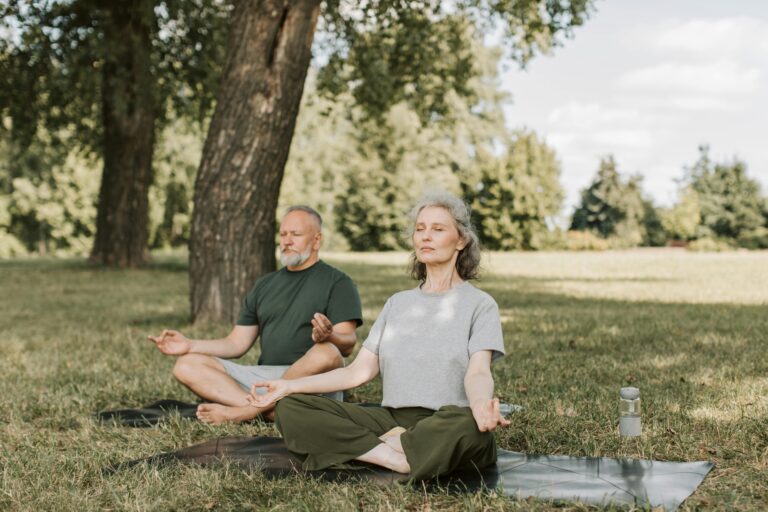In a world where we’re always rushing, scrolling, and chasing deadlines, wellness has become more than just a buzzword — it’s a necessity. But what does “wellness” actually mean? Is it fitness, meditation, eating right, or mental health? The truth is, wellness is all of these combined.
If you’re just starting your journey to a healthier, happier life, this guide will break down everything you need to know — what wellness really means, why it matters, common mistakes to avoid, and a step-by-step plan to improve your overall well-being.
What is Wellness, Really?
Wellness isn’t just about not being sick. It’s about actively making choices that improve your physical, mental, and emotional health. Think of it as a holistic approach to living better.
Most experts break wellness into seven key dimensions:
- Physical wellness – exercise, nutrition, sleep, healthy habits.
- Emotional wellness – stress management, self-awareness, resilience.
- Mental/intellectual wellness – learning, creativity, problem-solving.
- Social wellness – building relationships, community, support systems.
- Spiritual wellness – purpose, meaning, mindfulness, meditation.
- Occupational wellness – work-life balance, career satisfaction.
- Environmental wellness – living in harmony with nature, reducing toxicity in your surroundings.
👉 Wellness is the balance of all these areas, not just hitting the gym or eating salads.
Why Wellness Matters
- Energy & productivity: When you fuel your body right and manage stress, you get more done in less time.
- Disease prevention: Good nutrition, exercise, and sleep reduce risk of heart disease, diabetes, and obesity.
- Mental clarity: Mindfulness and balanced habits improve focus and creativity.
- Stronger relationships: Taking care of yourself makes you more present and positive around others.
- Long-term happiness: Wellness is about living with purpose and joy, not just surviving.
Common Wellness Myths
- “Wellness means being skinny.”
No. Wellness is about feeling strong, energized, and mentally at peace — not fitting into a certain size. - “You need hours every day for wellness.”
Small, consistent habits (like a 10-minute walk or journaling) have huge impact over time. - “It’s expensive.”
Fancy spas and supplements aren’t necessary. Walking, home cooking, and meditation apps are budget-friendly ways to stay well. - “It’s selfish to prioritize yourself.”
Taking care of yourself allows you to better care for others. Wellness is self-respect, not selfishness.
Common Mistakes Beginners Make
- Going all in, then burning out. Starting with a hardcore workout or strict diet usually leads to quitting.
- Ignoring mental health. Many focus only on physical health but neglect stress, anxiety, or emotional well-being.
- Comparing to others. Wellness is personal; copying someone else’s routine may not work for you.
- All-or-nothing mindset. One missed workout or “cheat meal” doesn’t ruin your progress.
- Neglecting sleep. You can eat perfectly and exercise daily, but poor sleep wrecks everything.
Step-by-Step Beginner Wellness Plan
Here’s a practical plan you can follow to start improving your wellness today:
1. Start with the Basics (Foundations of Health)
- Sleep: Aim for 7–9 hours daily. Set a consistent bedtime.
- Hydration: Drink 2–3 liters of water per day.
- Movement: Walk 8,000–10,000 steps daily.
👉 Before adding supplements or advanced routines, master these basics.
2. Build a Simple Nutrition Routine
- Follow the 80/20 rule: 80% whole, natural foods + 20% treats.
- Eat protein with every meal: Lentils, beans, tofu, yogurt, eggs.
- Prioritize fiber: Fruits, vegetables, whole grains improve digestion and gut health.
- Limit sugar & processed foods: They cause energy crashes and cravings.
3. Move Your Body (But Make It Enjoyable)
- Strength training (2–3x/week): Squats, push-ups, lunges, dumbbell rows.
- Cardio (2–3x/week): Walking, cycling, jogging, dance.
- Flexibility & mobility: Yoga or stretching 10 min daily.
👉 The best workout is the one you enjoy and can stick to long-term.
4. Practice Mindfulness
- Try 5 minutes of meditation each morning.
- Journal about gratitude and goals.
- Take tech-free breaks during the day.
5. Improve Emotional Wellness
- Talk about your feelings (friends, family, or therapy).
- Learn stress management (deep breathing, relaxation techniques).
- Set boundaries at work and in personal life.
6. Nurture Social Connections
- Spend quality time with loved ones.
- Join a community (online or offline) with similar interests.
- Surround yourself with supportive, positive people.
7. Find Your Purpose
- Ask yourself: What gives me meaning?
- It could be career, family, creativity, or helping others.
- Align your daily actions with your deeper values.
A Daily Wellness Routine (Beginner-Friendly)
Morning:
- Wake up and hydrate (1 glass water).
- 5 min meditation or journaling.
- Protein-rich breakfast.
Daytime:
- Move every hour (short walks, stretching).
- Balanced meals with veggies and protein.
- Limit phone use during work/study.
Evening:
- Light exercise (walk, yoga, or gym).
- Dinner with family/friends.
- Gratitude journaling or reading.
Night:
- No screens 1 hour before bed.
- Relaxation routine (herbal tea, meditation, light stretches).
- Sleep 7–9 hours.
Long-Term Habits for Lasting Wellness
- Prioritize consistency over perfection.
- Celebrate small wins (like drinking enough water or hitting step goals).
- Adapt as life changes — wellness is flexible, not rigid.
- Keep learning — explore new foods, workouts, or mindfulness techniques.
Final Thoughts
Wellness isn’t about strict rules, six-packs, or expensive retreats. It’s about feeling good in your body, calm in your mind, and fulfilled in your life.
If you start small and stay consistent, you’ll gradually build habits that transform not just your health, but your entire life.
Remember: Wellness is not a destination — it’s a lifestyle.










